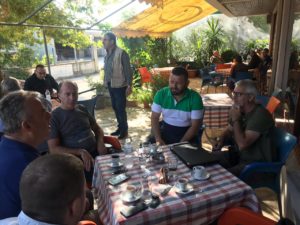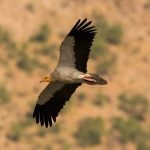In recent months, the dedication to monitoring and evaluating Egyptian Vulture’s territories has been intense and dynamic for AOS team. Following consecutive visits, AOS conducted the latest monitoring over Egyptian Vulture’s territories.
One of the main purposes of this visit consisted of the last monitoring of the territories of this species, the main focus was the status of adult and young individuals on these territories. To ensure a clearer record of the situation, AOS team decided to visit the EV territories twice a day, during the morning and afternoon. Observers decided to visit and monitor the space near and around the nest of this species. During the day, there was a lack of their presence in the nest and around the territory. Afterward monitoring the situation, adult and young individuals left their nests and began their journey in the third week of September 2019. The productivity and performance of the growth and development of young individuals appear to have been successful because both young individuals from our territories have begun migrating with their parents.
Among the major threats that species are facing today is the phenomenon of electrocution by power lines. Power lines are a threat that birds face while flying through the migration corridors. Across the Drinos valley, AOS team observed the territory of the Gline-Frashtan sector on the possibility and presence of cases of collision or electrocution of birds with power lines.
In the meantime, beyond monitoring and observing the territories of this species, during the visit AOS team met with various local stakeholders, including the Mayor of Dropull, Regional Agency for Protected Areas of Gjirokastra, community members, teachers, journalists and supporters of conservation efforts undertaken by AOS.
Among them, key local actors are showing interest in improving the situation and conserving this species in their territories. Cooperation between AOS and local key stakeholders remains an important communication relation in realizing the improvement of this species’ situation.






